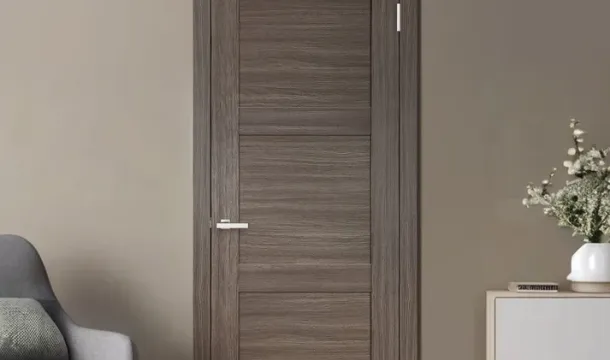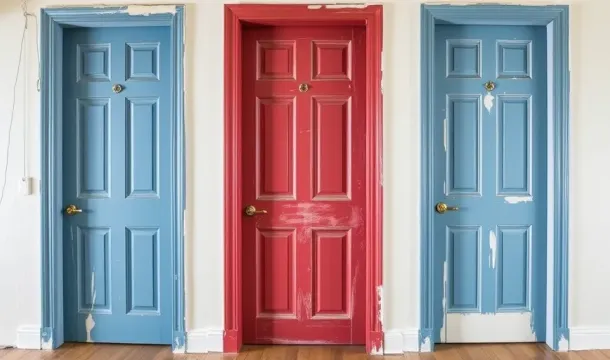Are Interior Doors a Good Investment for Home Security?
Popular Articles
Opting for durable barriers within your residence is a strategic decision that significantly boosts your protection. Focus on models equipped with robust locking mechanisms to prevent unauthorized entry. Investing in high-quality materials ensures longevity, making them a wise choice for those prioritizing safety.
When selecting these partitions, consider options that combine aesthetic appeal with functionality. A good design should not only complement your interior but also provide reliable defense against potential threats. Stronger frames and solid cores add layers of security, enhancing overall peace of mind.
Evaluate the locking systems available; deadbolts and multi-point locks offer superior resistance compared to standard latches. These features contribute to an effective barrier, reinforcing the idea that every aspect of your home should work towards ensuring your family's well-being.
Material Strength and Durability
Selecting robust materials is critical for enhancing safety in your residence. A good choice includes solid wood, steel, or fiberglass, each offering varied levels of durability and resistance against forced entry.
A high-quality locking mechanism further enhances these materials' protective features. Ensure that locks are made from hardened steel and include multiple points of engagement for added resilience. Investing in reinforced frames can also significantly improve the overall strength of any barrier.
The combination of a strong structure with reliable locking systems forms a comprehensive approach to safeguarding your space. Prioritize options that not only meet aesthetic preferences but also provide an enduring defense against potential threats.
Locking Mechanisms Analysis
Choose deadbolts over standard spring locks for optimal protection. A single-cylinder deadbolt provides enhanced resistance against forced entry compared to traditional locks.
Consider smart locking systems equipped with advanced technology. These devices often include features like remote access and activity logs, offering a higher level of security and convenience. Ensure the smart lock is compatible with your mobile devices for seamless integration.
Evaluate the quality of materials used in the locking mechanisms. Durable metals such as brass or steel are preferable, as they withstand wear and tear better than plastic alternatives, ensuring long-term reliability.
Incorporate additional locking points on sliding doors or cabinets to enhance safety. Multi-point locking systems can significantly boost overall security by distributing force across multiple areas of the door frame.
Regular maintenance is crucial for all locking systems. Lubricate locks periodically to prevent sticking and ensure smooth operation, enhancing both longevity and performance.
When assessing these mechanisms, prioritize those that offer robust protection without compromising ease of use. A good lock should provide peace of mind while allowing easy access for residents.
Installation Techniques Overview
To ensure optimum protection, proper fitting and installation of your barrier are crucial. Begin by verifying that the frame is level and square; this prevents gaps that can compromise safety. Secure the hinges with long screws, ideally 3-inch or longer, to enhance stability and deter forced entry.
Utilize a deadbolt locking system for added security. Install it at least 40 inches above the ground for easy access while remaining out of reach for potential intruders. Ensure that the strike plate is reinforced with screws penetrating deep into the frame, providing an additional layer of durability.
Consider using shims to fill any irregularities in the door frame, ensuring a snug fit that minimizes space between the door and frame. This step is vital in enhancing both protection and sound insulation within your living space.
For enhanced safety, apply weatherstripping around the edges to prevent drafts and reduce noise. This not only improves comfort but also deters unauthorized access through small gaps.
Regular maintenance checks on hinges and locks will help maintain functionality over time. Lubricate moving parts periodically to ensure smooth operation and extend lifespan.
A good installation paired with high-quality components will significantly bolster home defense, making it a worthy investment in peace of mind.
Cost vs. Security Benefits
Investing in robust solutions for internal barriers is a strategic move toward enhancing protection within your residence. When comparing costs, consider the long-term advantages of selecting durable materials that withstand forced entry attempts and wear over time. For example, solid-core options, while pricier initially, offer superior resilience against impact compared to hollow variants.
Locking systems significantly affect both safety levels and overall expenses. High-quality deadbolts paired with reinforced frames provide an additional layer of defense without excessively increasing costs. The initial outlay may be higher, but the reduction in potential losses from theft or damage justifies the expense.
Installation techniques can influence overall value as well. Professional installation ensures proper alignment and functionality of locking mechanisms, which enhances security measures and minimizes future repair needs. This investment in skilled labor pays off by reducing potential vulnerabilities that could arise from improper setup.
Ultimately, balancing upfront costs with the benefits of enhanced safety creates a more secure living environment. Analyze your specific needs and budget to make informed decisions that prioritize long-term protection without compromising on quality.
Maintenance and Upkeep Tips
Regular inspection is key to ensuring the longevity of your protective barriers. Check for any signs of wear, such as scratches, dents, or warping. Addressing these issues promptly can prevent further damage.
- Cleaning: Use a mild detergent and soft cloth to clean surfaces. Avoid abrasive cleaners that may scratch finishes.
- Humidity Control: Maintain indoor humidity levels between 30-50% to minimize warping or swelling of materials.
- Lubrication: Periodically lubricate locking mechanisms with graphite powder or silicone spray to ensure smooth operation.
- Sealing: Inspect and replace weather stripping or seals as needed to enhance protection against drafts and moisture.
A well-maintained barrier not only enhances safety but also prolongs the lifespan of your investment. Consider checking all hardware components regularly for tightness and functionality.
- Inspect hinges for rust or misalignment; adjust as necessary.
- Test locks frequently to confirm they engage smoothly without sticking.
- Repaint or refinish surfaces every few years to protect against environmental wear.
Implementing these maintenance practices will ensure your safety measures remain reliable and effective over time.
Popular Articles

Choosing the Perfect Interior Doors for Your Canadian Home

A Complete Guide to Choosing Interior Doors for Canadian Homes
